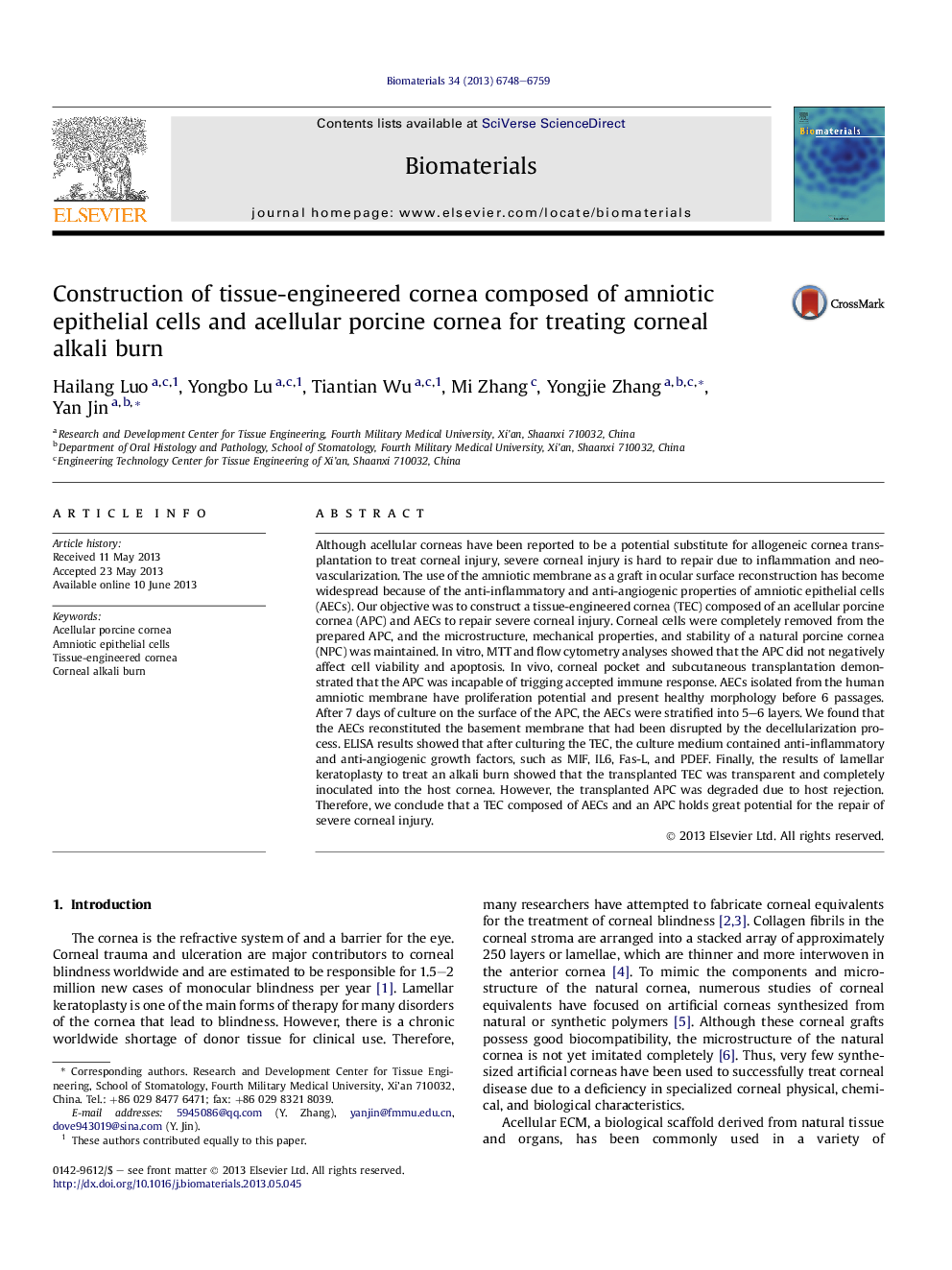| کد مقاله | کد نشریه | سال انتشار | مقاله انگلیسی | نسخه تمام متن |
|---|---|---|---|---|
| 10228912 | 498 | 2013 | 12 صفحه PDF | دانلود رایگان |
عنوان انگلیسی مقاله ISI
Construction of tissue-engineered cornea composed of amniotic epithelial cells and acellular porcine cornea for treating corneal alkali burn
ترجمه فارسی عنوان
ساخت قرنیه مهندسی بافتی متشکل از سلولهای اپیتلیال آمنیوتیک و قرنیه عضله ساق پا برای درمان قلیایی قرنیه
دانلود مقاله + سفارش ترجمه
دانلود مقاله ISI انگلیسی
رایگان برای ایرانیان
کلمات کلیدی
قرنیه گوشتی زردرنگ، سلول های اپیتلیال آمنیوتیک، قرنیه مهندسی بافت، سوزاندن قلیا قرنیه،
موضوعات مرتبط
مهندسی و علوم پایه
مهندسی شیمی
بیو مهندسی (مهندسی زیستی)
چکیده انگلیسی
Although acellular corneas have been reported to be a potential substitute for allogeneic cornea transplantation to treat corneal injury, severe corneal injury is hard to repair due to inflammation and neovascularization. The use of the amniotic membrane as a graft in ocular surface reconstruction has become widespread because of the anti-inflammatory and anti-angiogenic properties of amniotic epithelial cells (AECs). Our objective was to construct a tissue-engineered cornea (TEC) composed of an acellular porcine cornea (APC) and AECs to repair severe corneal injury. Corneal cells were completely removed from the prepared APC, and the microstructure, mechanical properties, and stability of a natural porcine cornea (NPC) was maintained. In vitro, MTT and flow cytometry analyses showed that the APC did not negatively affect cell viability and apoptosis. In vivo, corneal pocket and subcutaneous transplantation demonstrated that the APC was incapable of trigging accepted immune response. AECs isolated from the human amniotic membrane have proliferation potential and present healthy morphology before 6 passages. After 7 days of culture on the surface of the APC, the AECs were stratified into 5-6 layers. We found that the AECs reconstituted the basement membrane that had been disrupted by the decellularization process. ELISA results showed that after culturing the TEC, the culture medium contained anti-inflammatory and anti-angiogenic growth factors, such as MIF, IL6, Fas-L, and PDEF. Finally, the results of lamellar keratoplasty to treat an alkali burn showed that the transplanted TEC was transparent and completely inoculated into the host cornea. However, the transplanted APC was degraded due to host rejection. Therefore, we conclude that a TEC composed of AECs and an APC holds great potential for the repair of severe corneal injury.
ناشر
Database: Elsevier - ScienceDirect (ساینس دایرکت)
Journal: Biomaterials - Volume 34, Issue 28, September 2013, Pages 6748-6759
Journal: Biomaterials - Volume 34, Issue 28, September 2013, Pages 6748-6759
نویسندگان
Hailang Luo, Yongbo Lu, Tiantian Wu, Mi Zhang, Yongjie Zhang, Yan Jin,
